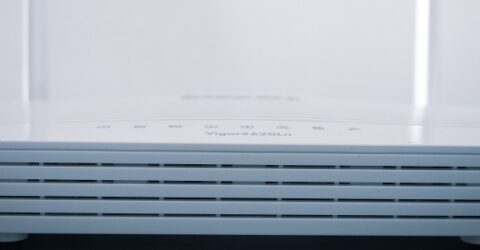The best and worst places to put your broadband router
Where you keep your wifi router can have a surprisingly big impact on the quality of your broadband connection.

Broadband routers are the unsung heroes of the internet age.
It’s the router’s job to distribute data from phone lines and fibre optic cables around our homes, to devices as diverse as smart speakers, security cameras and wearable fitness trackers.
Routers also have to support hardwired connections along Ethernet cables, usually to computers, televisions and games consoles.
They do this non-stop, without praise or acknowledgement. We only tend to look at routers when connections drop or slow down.
Yet in many cases, disappointing router performance is down to our own decision-making.
A classic example involves range. We expect these devices to reliably service any property regardless of its dimensions, as well as extending into gardens and outbuildings.
Yet routers could be prevented from meeting this expectation simply by bad positioning.
Range anxiety
If you think the position of your broadband router is irrelevant, think again.
Putting it inside a cupboard or behind a fish tank could massacre its achievable range – water is a notorious signal-dampener.
Reduced range could manifest as dropped signals, slow and interrupted data transfers, or devices repeatedly flicking between WiFi and mobile network services.
It’s worth taking a few moments to consider the best and worst places to put a router in a typical home, potentially saving you money on mesh extenders and mobile data.
It might also save time troubleshooting connection issues with your ISP…
Pretty fly for a WiFi
Any list of the best and worst places to put a router starts by considering how these devices distribute data.
It’s commonly assumed that they project data forwards from the front panel, when in fact their coverage arc is broadly spherical.
As such, start by looking for a position centrally within your home.
In a two-storey house, that’d be midway between the front façade and rearmost walls. In a double-fronted bungalow, it might be along a central hallway.
Height also matters. Routers don’t work well perched on the floor, so try to sit them on a small shelf or table. In a two-storey house, this would normally be upstairs.
Consider where you spend time, too. If upstairs apartments lie empty while you spend most evenings in a basement TV room, the router’s optimal location might not be dead central after all.
The route(r) of all evil
Routers aren’t especially attractive items, so it’s tempting to hide them in a cupboard. Unfortunately, this slashes their achievable range.
Similar results occur when a router is positioned next to a metal panel, or behind a TV set.
Because the primary frequency used by wireless routers is the same 2.4GHz band microwave ovens and baby monitors rely on, these bandwidth competitors should be kept well apart.
A bookcase may seem an obvious location, but books are dense. A bottom-shelf location below four tiers of paperbacks might prevent signals reaching upper storeys in your home.
You certainly wouldn’t want to put a router on a windowsill. Half its range would travel straight out of the window, while advertising the router’s model details to passing hackers.
Other ways to boost signal strength
If repositioning your router hasn’t achieved whole home data coverage, there are still a few things to try.
Invest in a range extender to amplify coverage around the house. Some ISPs offer proprietary products, while third-party devices may be compatible with certain router brands.
A comparable job is performed by mesh WiFi systems. Rather than amplifying an existing router signal, mesh devices work together to form a larger unified WiFi network.
Powerline adaptors facilitate hardwired connections between routers and devices anywhere in the home, using electrical circuits to transmit digital data down Ethernet cables.
Finally, you could buy a third-party router, as long as your internet is supplied along an Openreach connection rather than a proprietary full fibre service from the likes of Virgin Media.
A more powerful router (ideally with external aerials) also brings the added benefit of coverage across additional frequencies, like the high-speed 5GHz and 6GHz bands.






